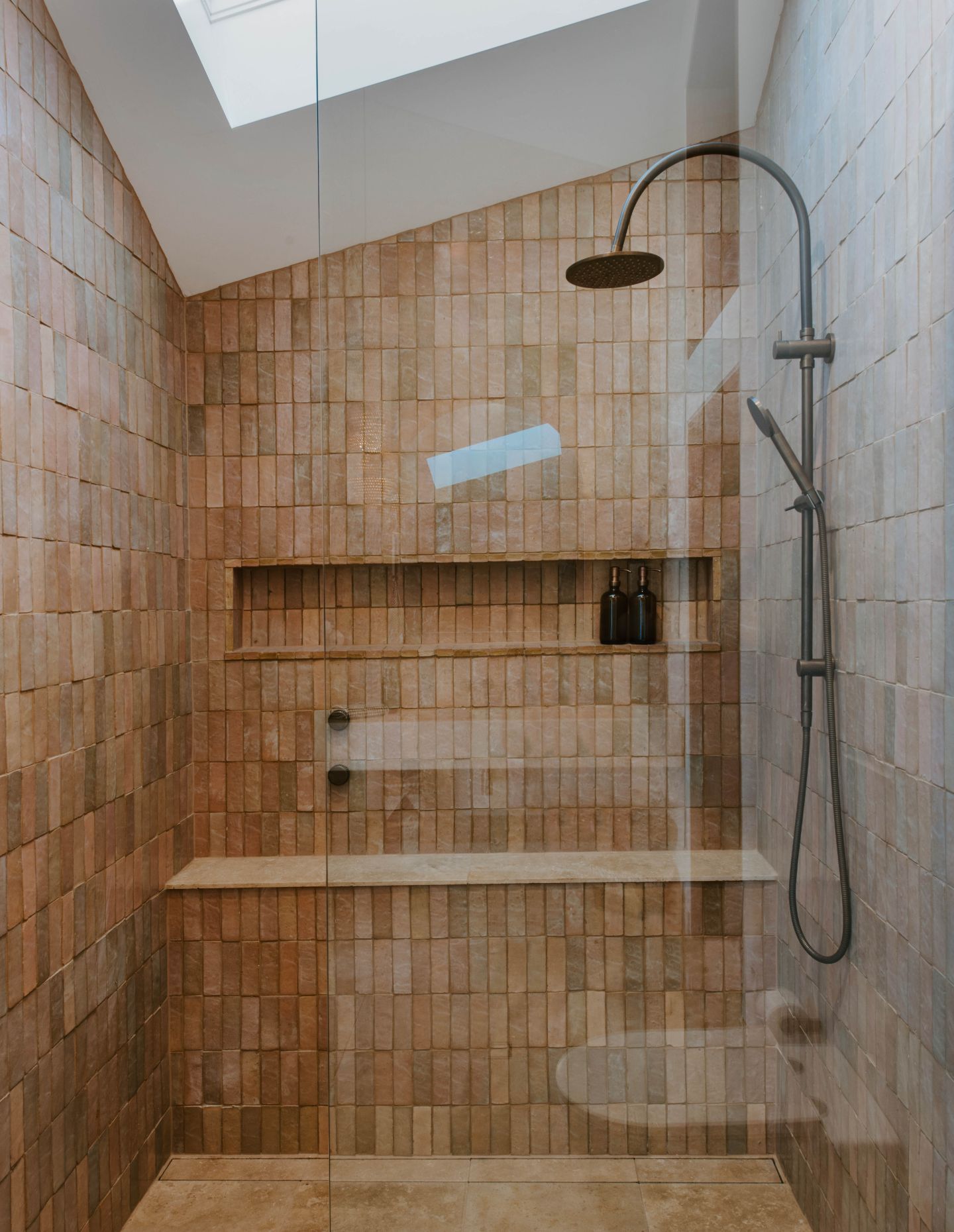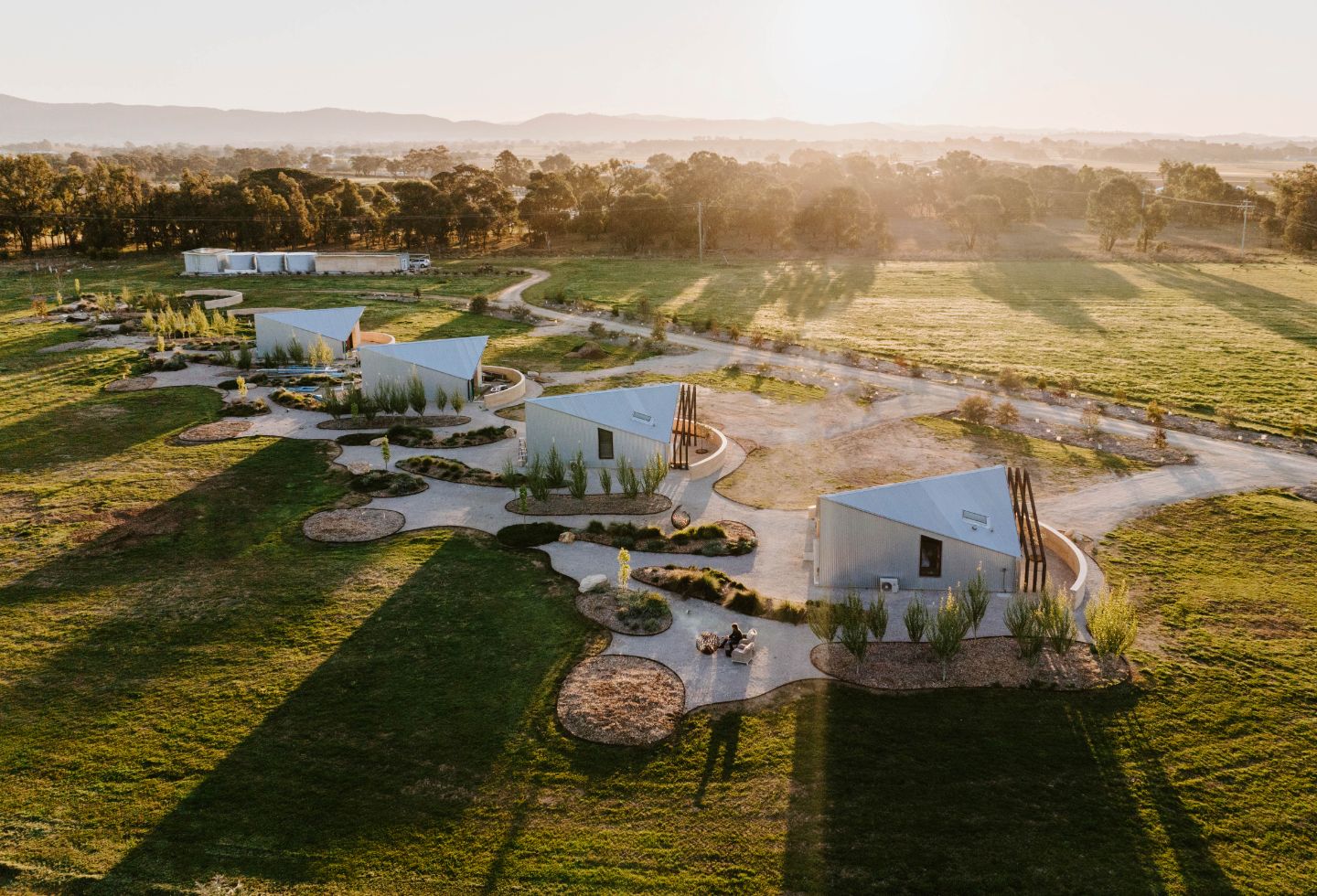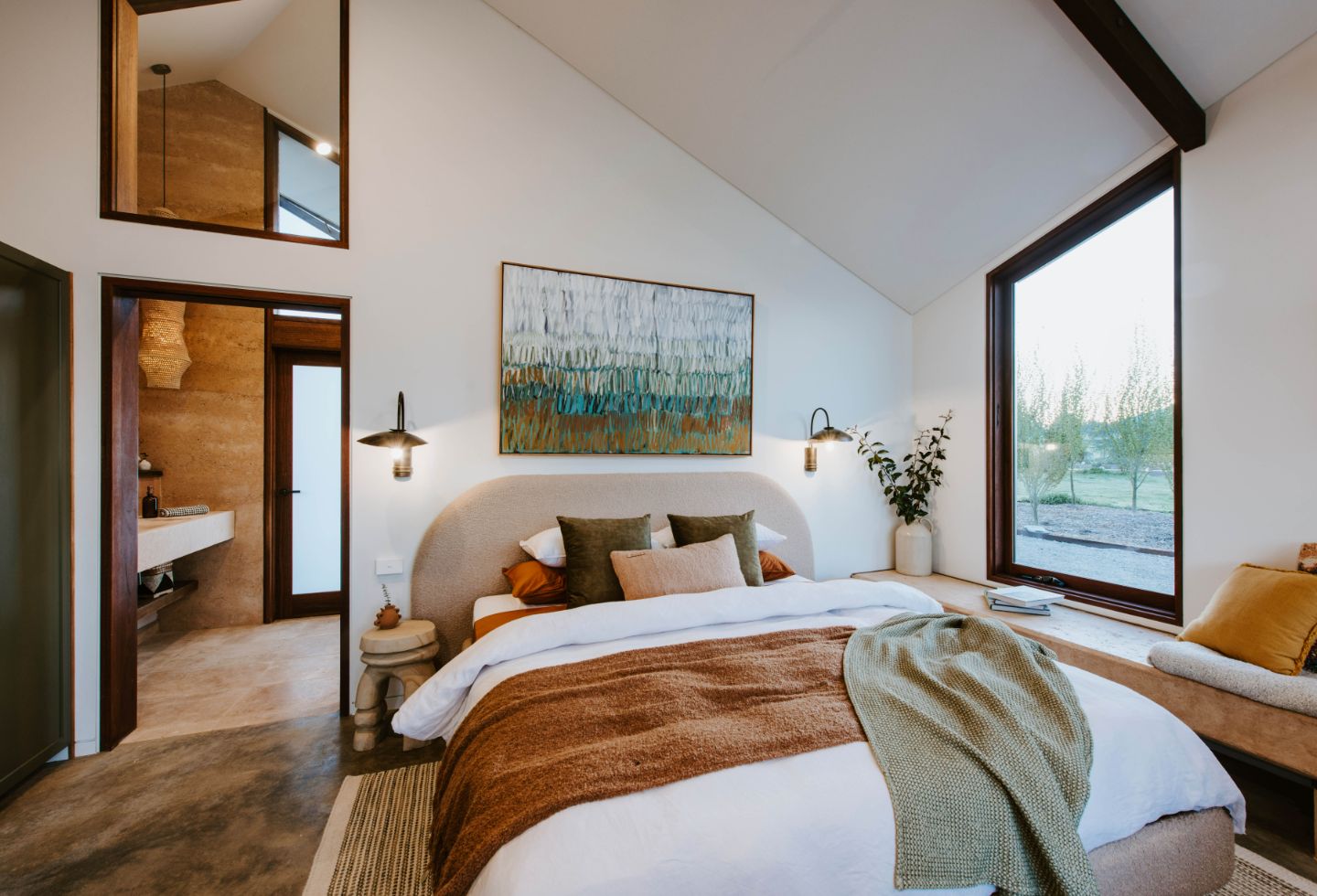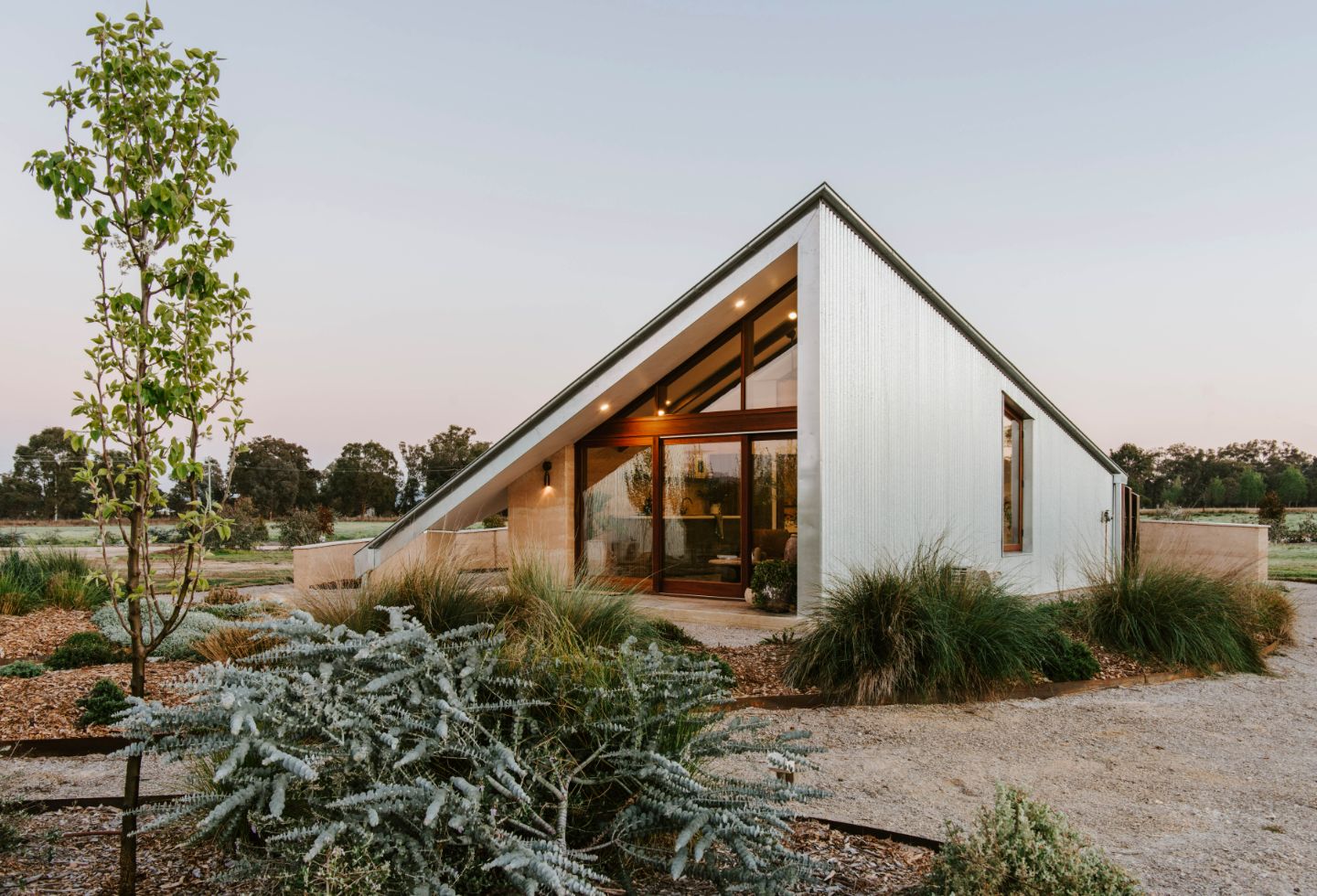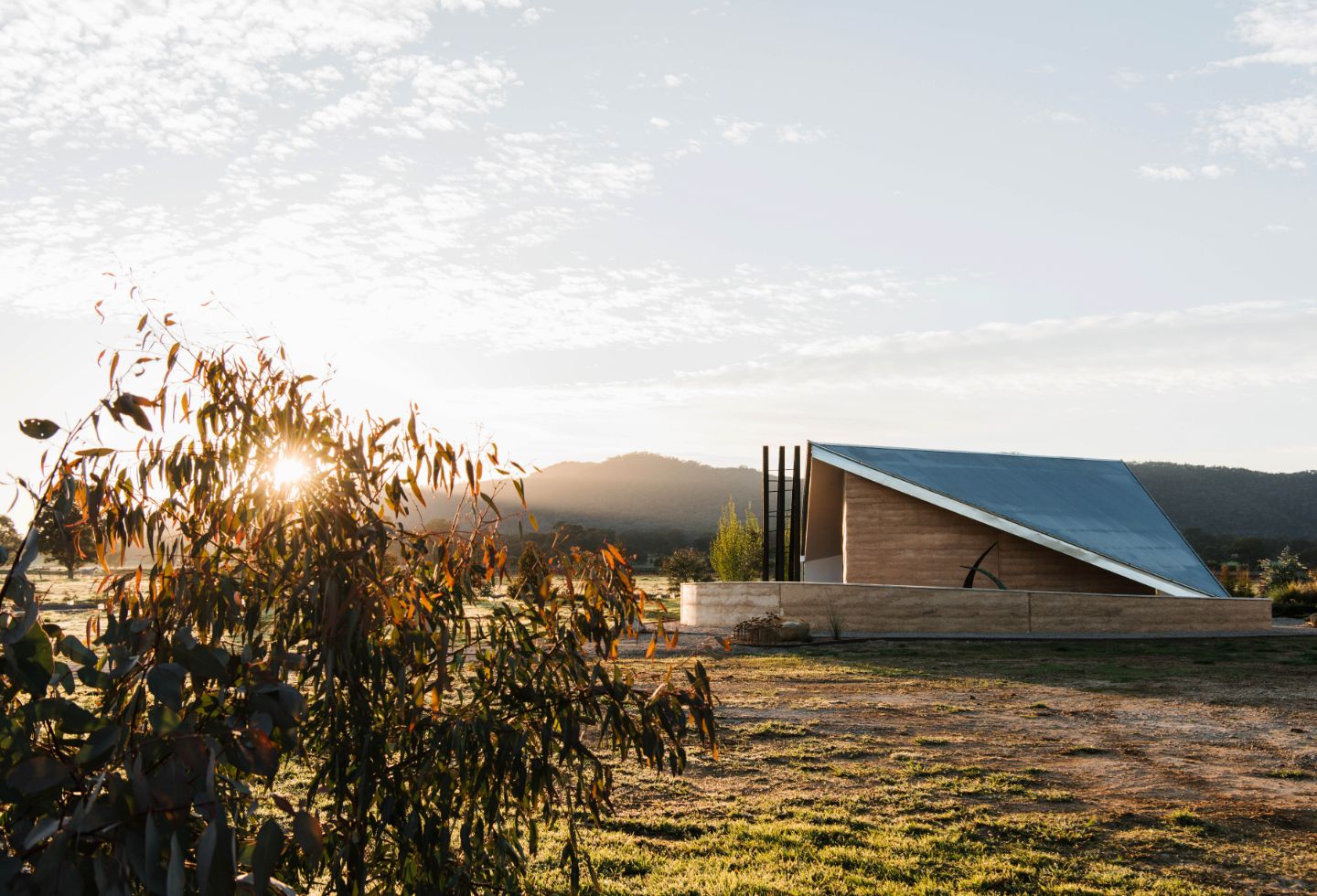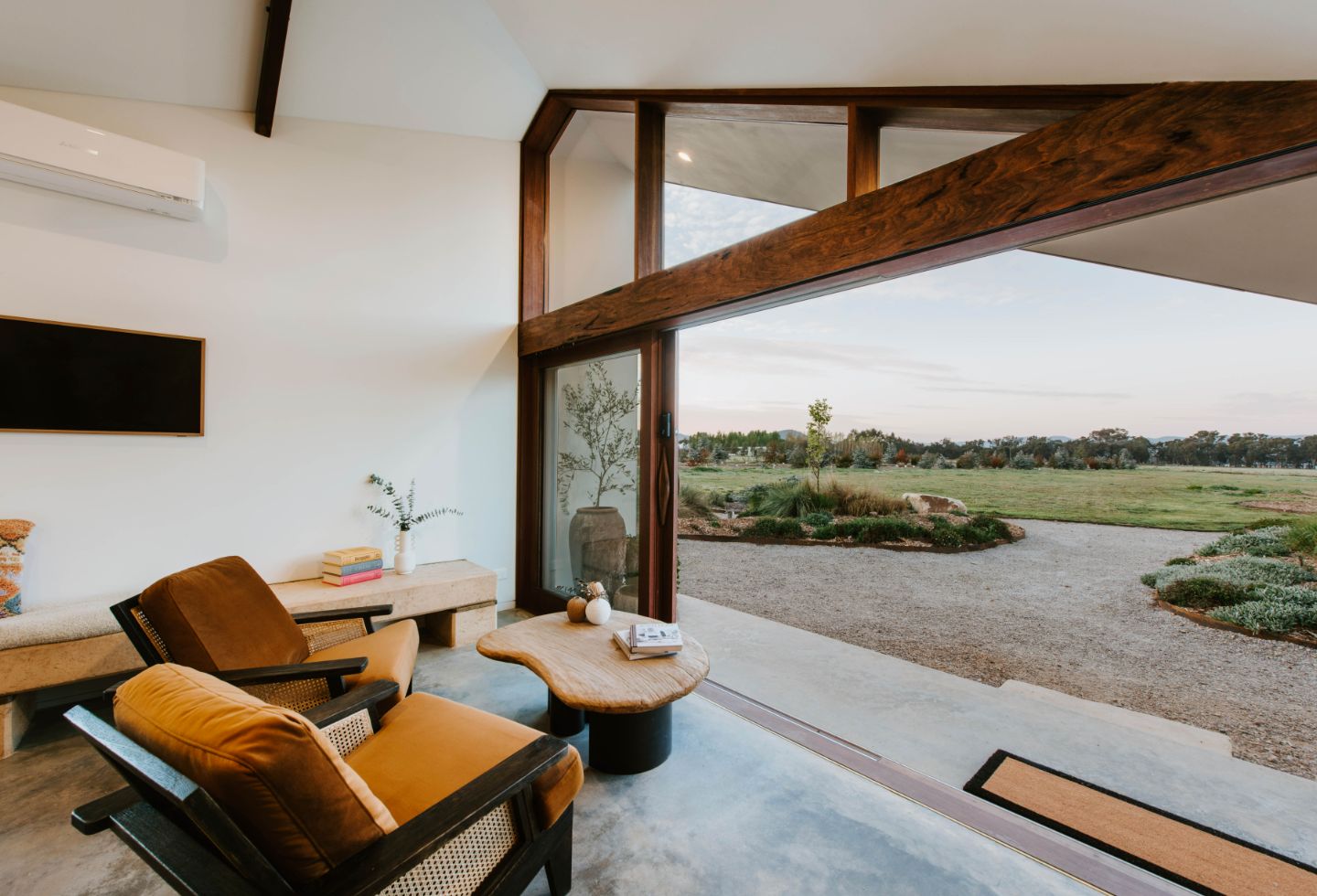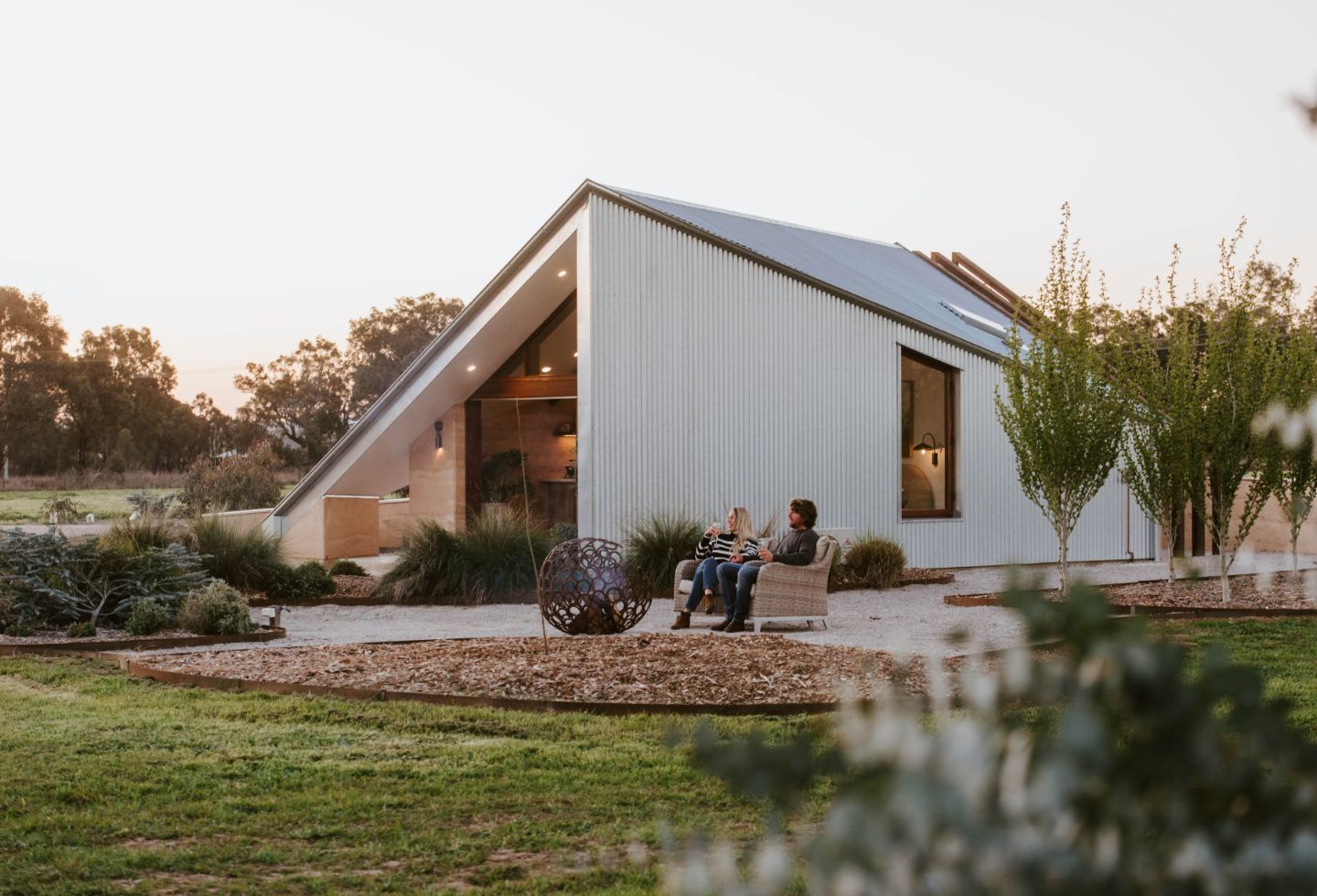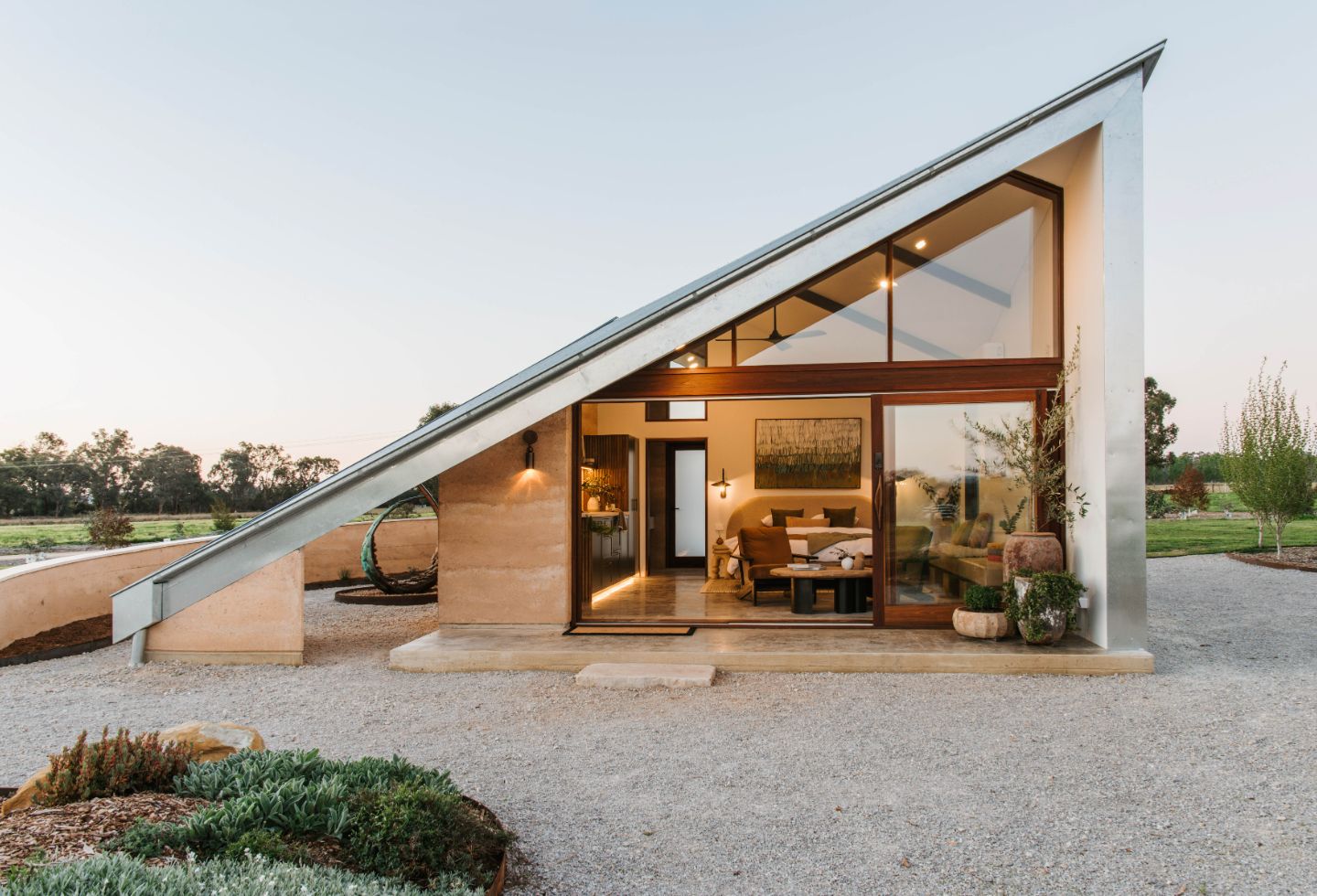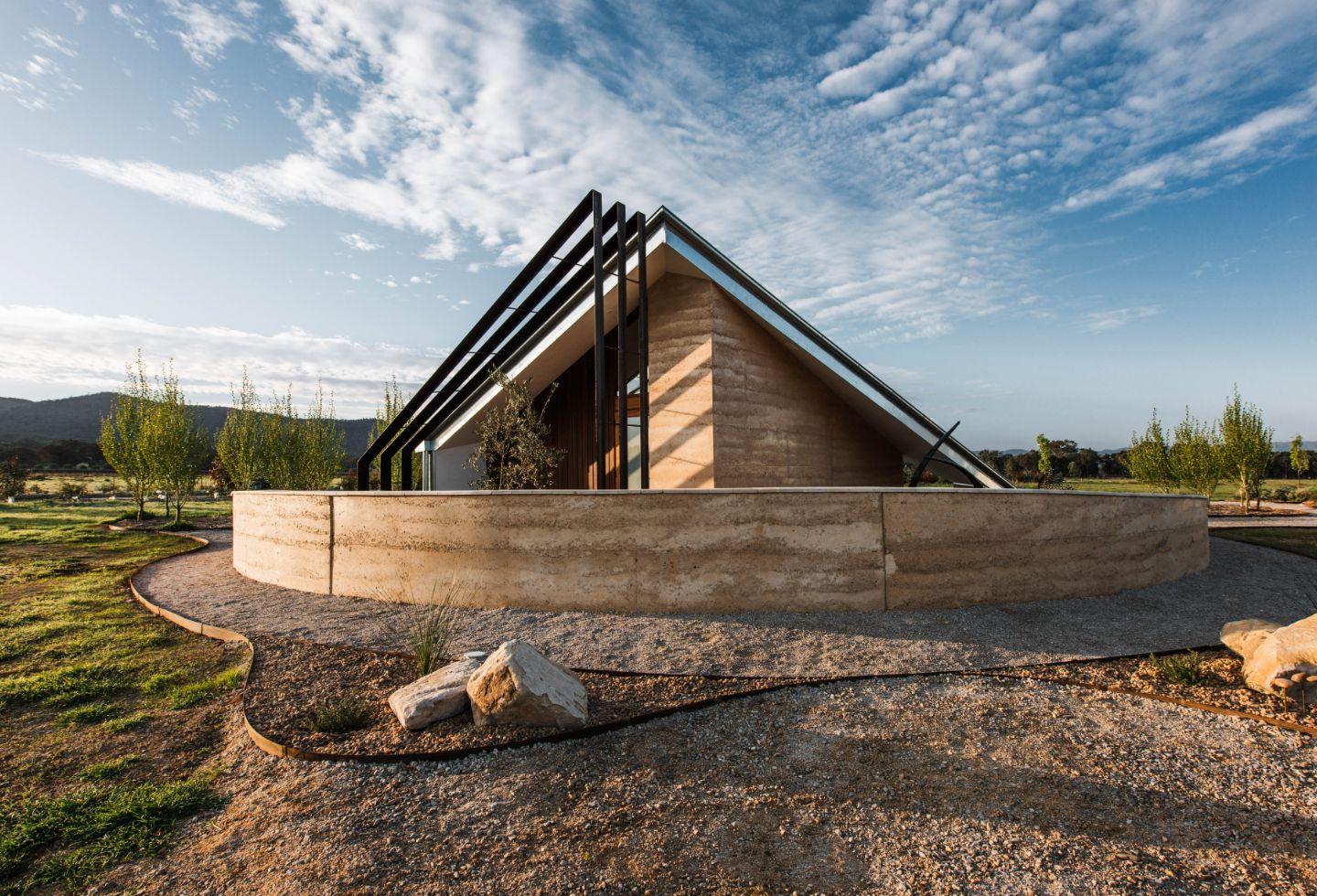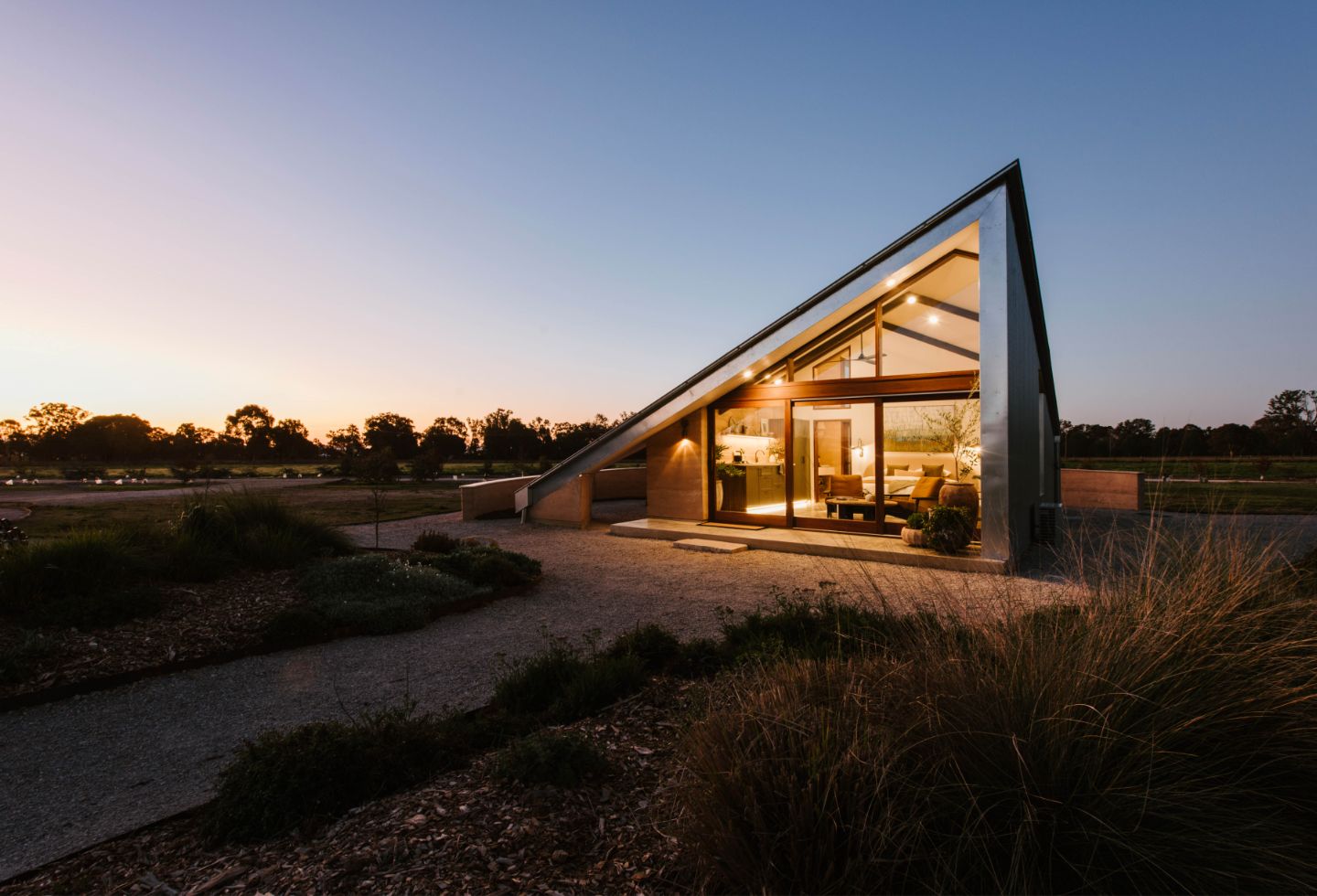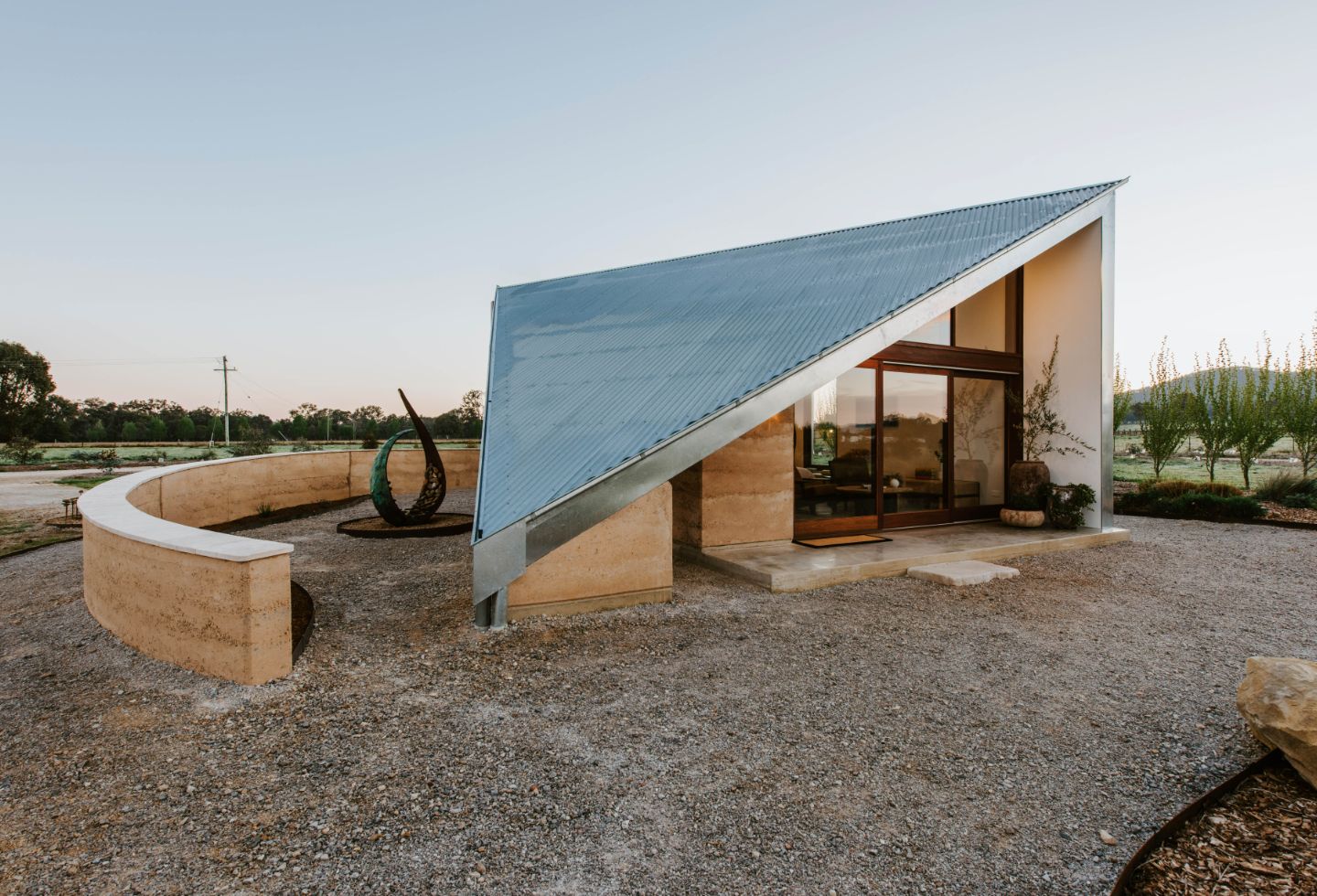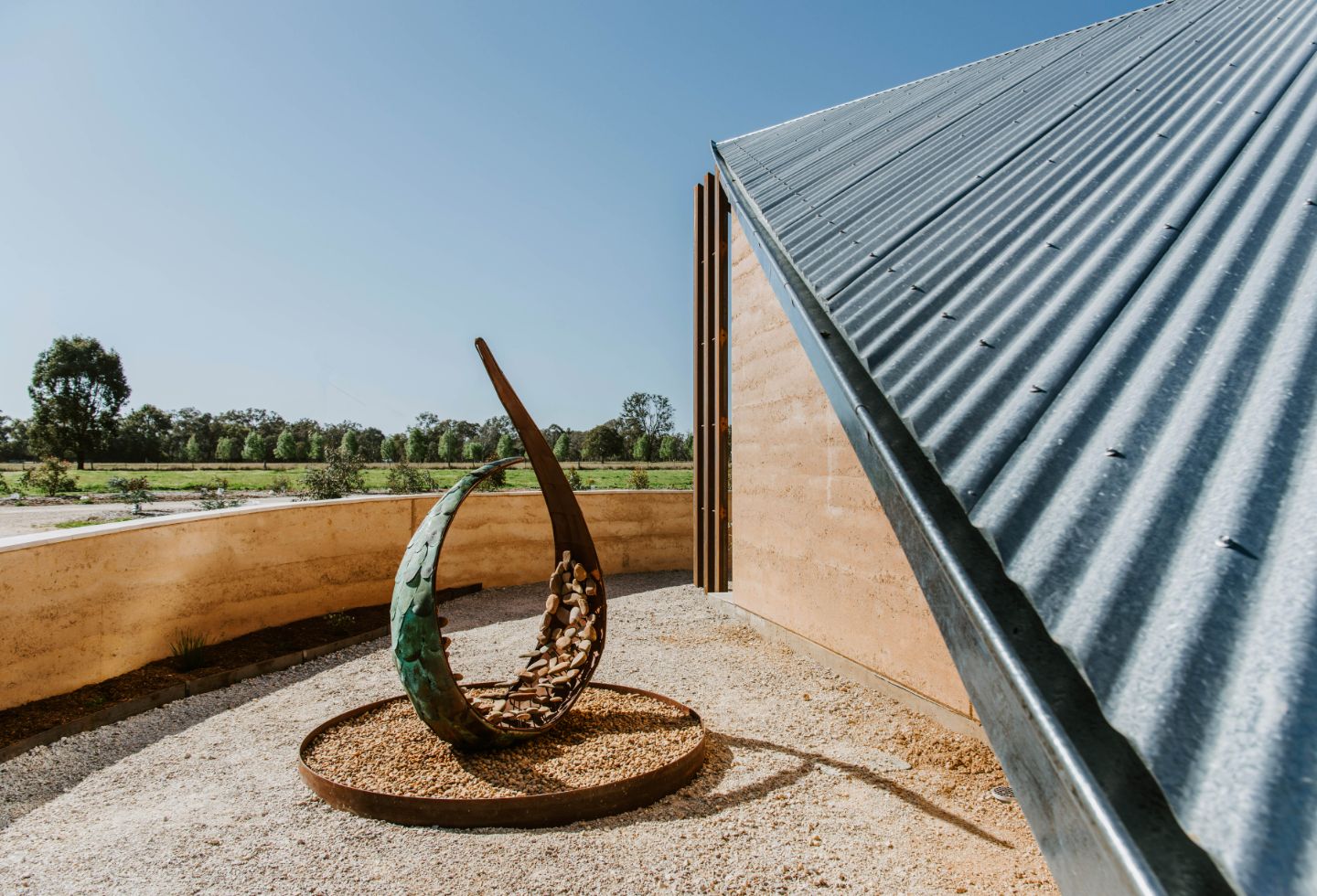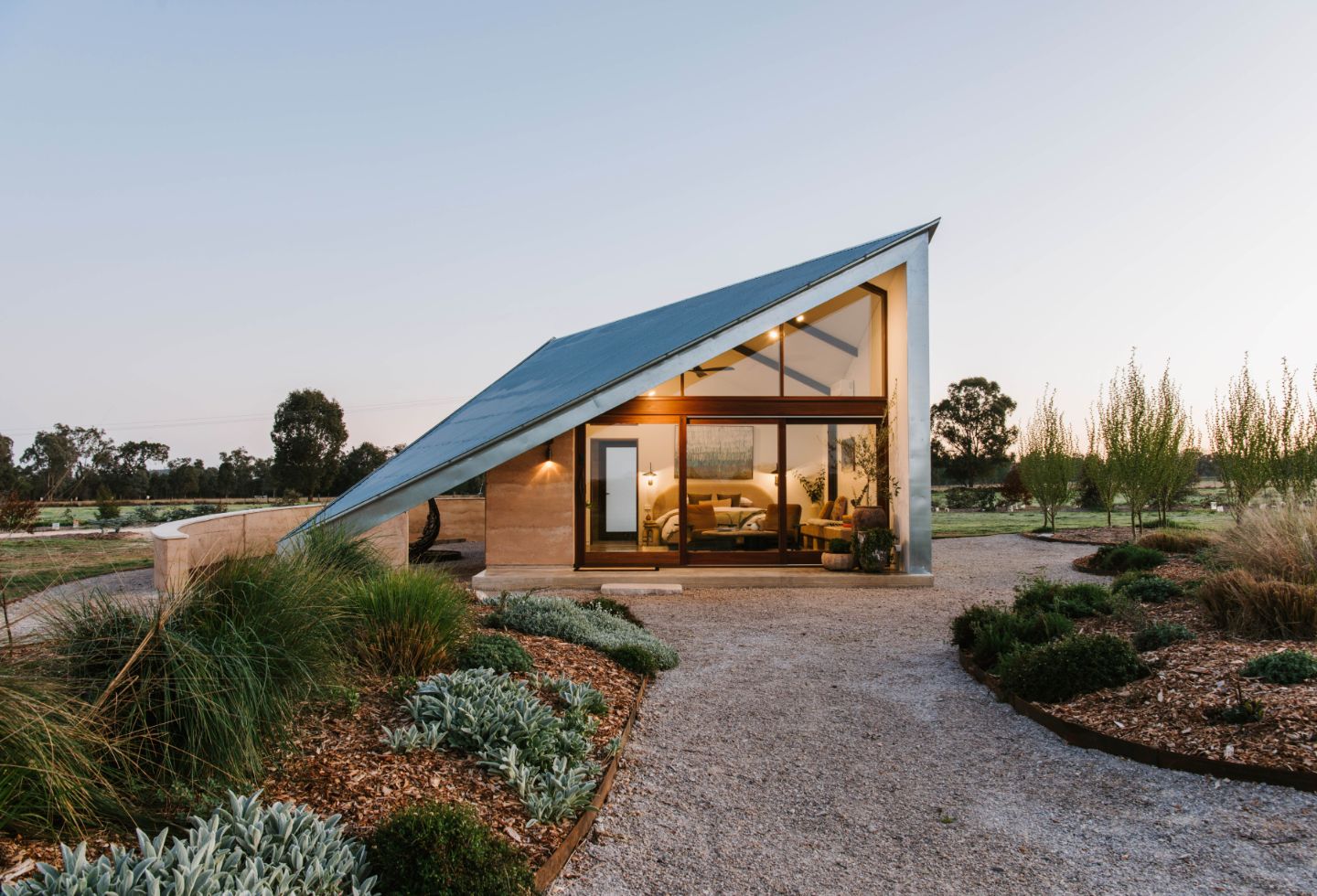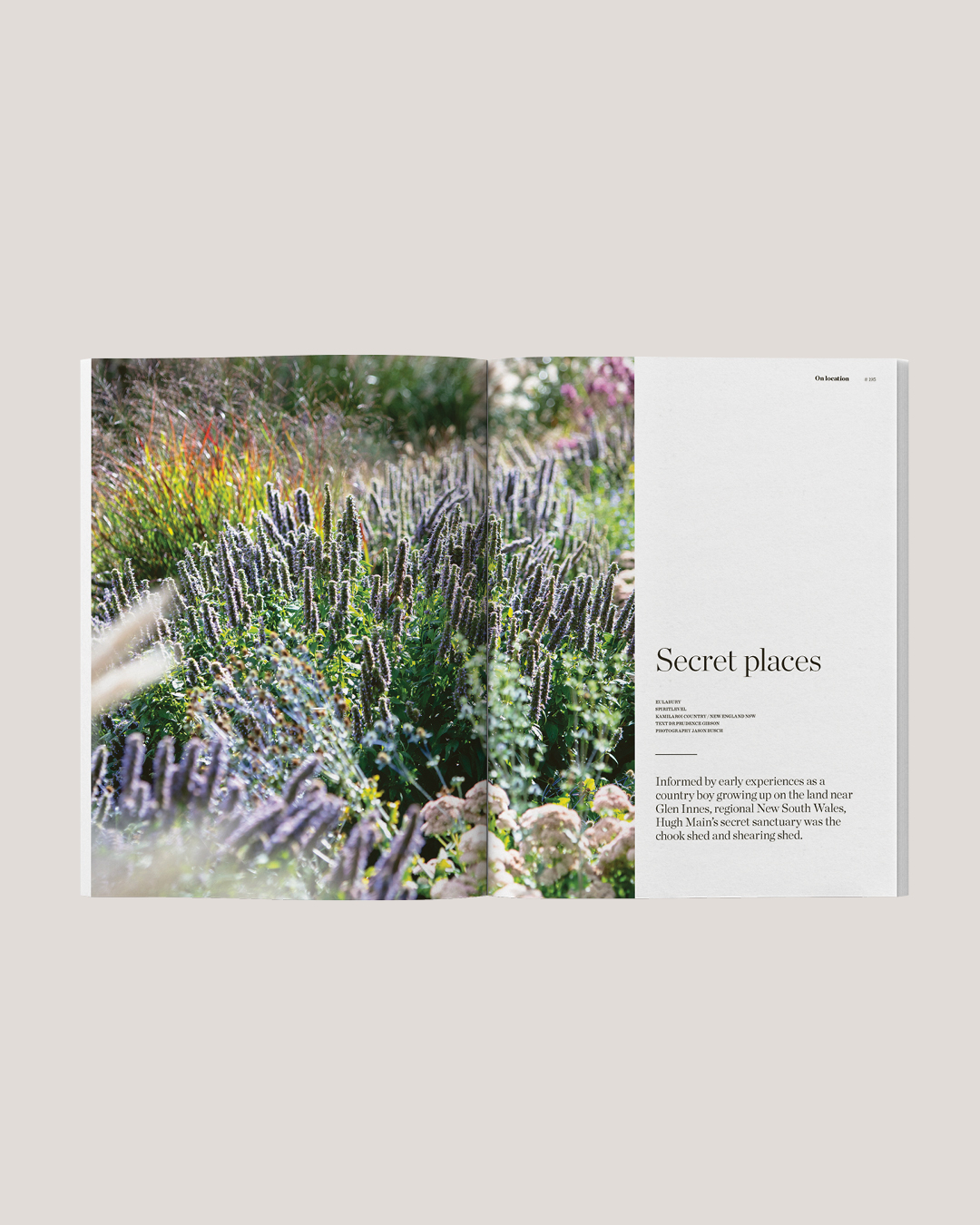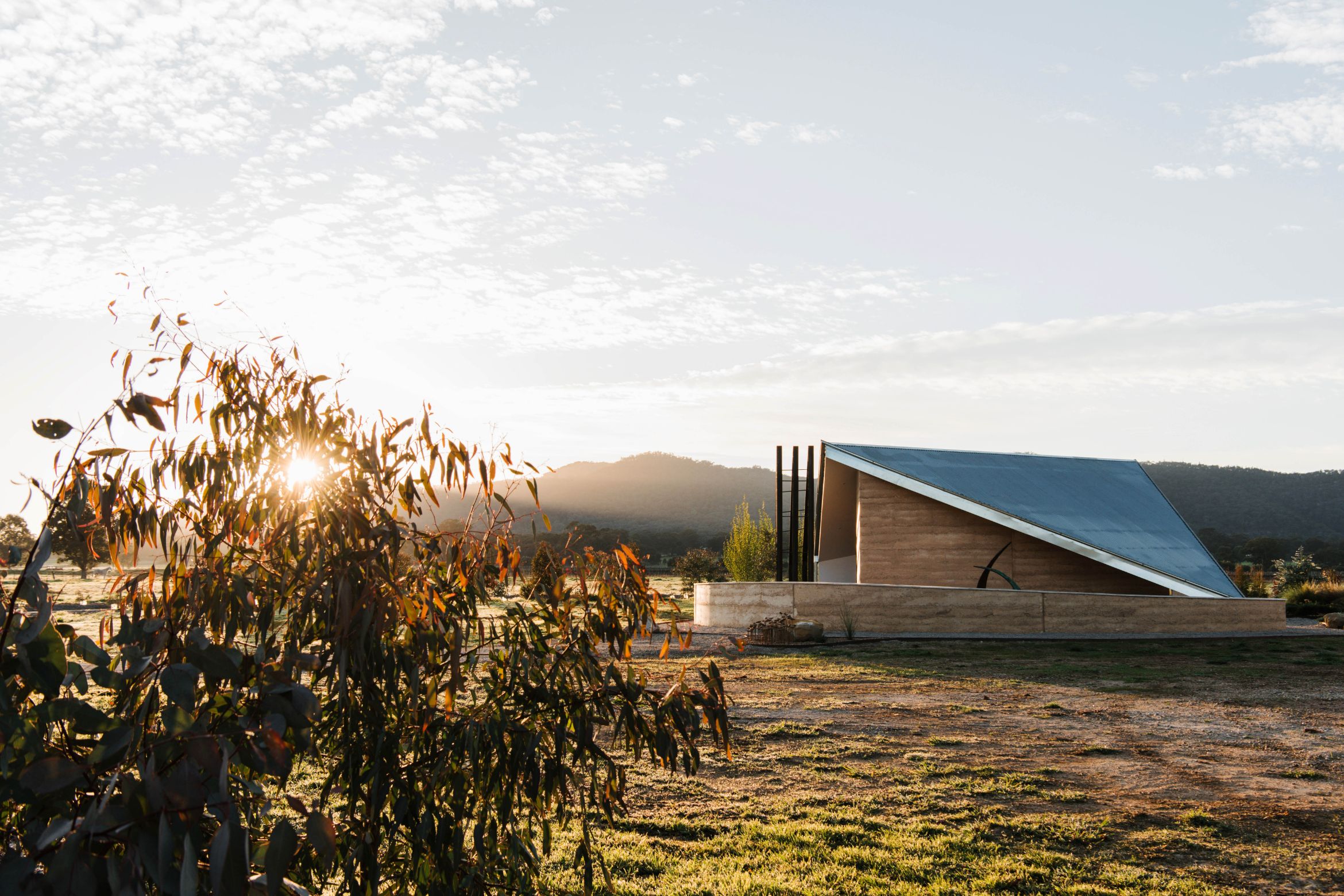Design-led tourism is more sought-after than ever, with destinations such as Kavillo Studios seizing attention in the burgeoning scene. Set within the locale of Mudgee NSW, this contemporary accommodation was designed to capture the quintessence of camping, with its A-frame evoking a tent-like structure.
Tilted over the internal program below, the folded roof form appears in tension and grounds itself to a rammed earth plinth on the southwest corner. A Pisé (de terre), orientated on the west, is shaded by the gable while grounding the building and providing privacy from the neighbouring suite of buildings that extend beyond to the west. While moderately open to the prevailing Southern views, the dwelling is afforded privacy from the folding roof which opens to allow the northern winter sun via a glazed door.
Structural engineer Scott Smalley Partnership’s input was central to the design, both for the innovations with rammed earth and lean approach to the structural steel portal frames. The building was conceived by its owner-builder Michael Ferris, whose background in sculpture provided the perfect catalyst to deliver a complex form. Built to a strict budget, the building footprint is of a small scale and delivers a superior cost-value outcome.
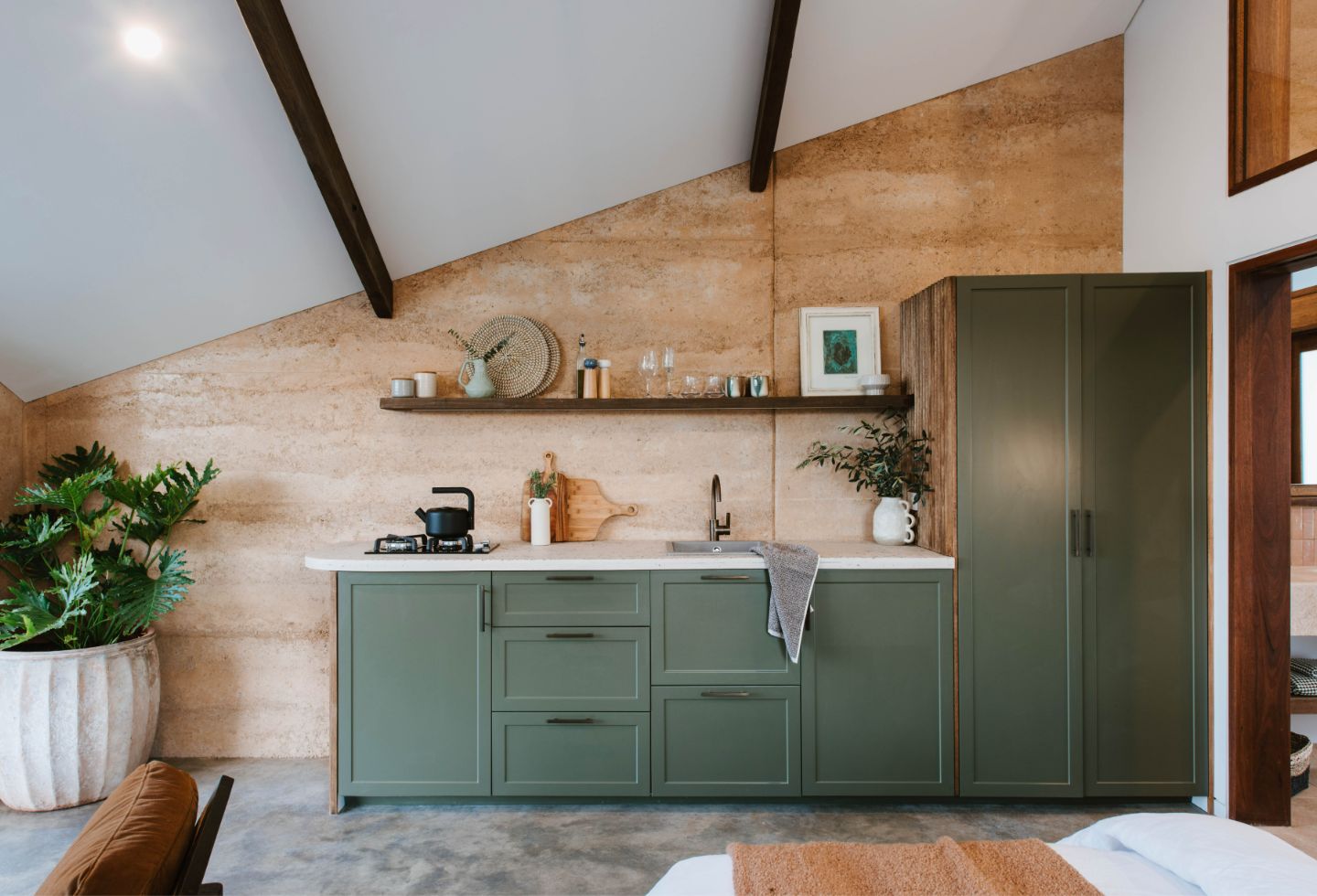
The buildings are entirely off-grid, encompassing an electrical storage solution that has a mechanical flywheel battery, as opposed to traditional battery storage – powered by 26kw of solar panels. Double-glazed hardwood timber fenestration and doors are incorporated with high levels of building insulation, while a steel pergola and overhangs to the north shade the building from the seasonal sun. Additionally, low water use fixtures ornament the interior and a vast curatorial of interior fixtures and finishes have been handcrafted by the owner – such as the basin and light fittings.
The legion of materials pays homage to its rural context with galvanised sheet metal cladding and roofing drawing from the numerous shearing sheds nearby, while the rammed earth references the abundance of Pisé buildings that appear in this locality.
